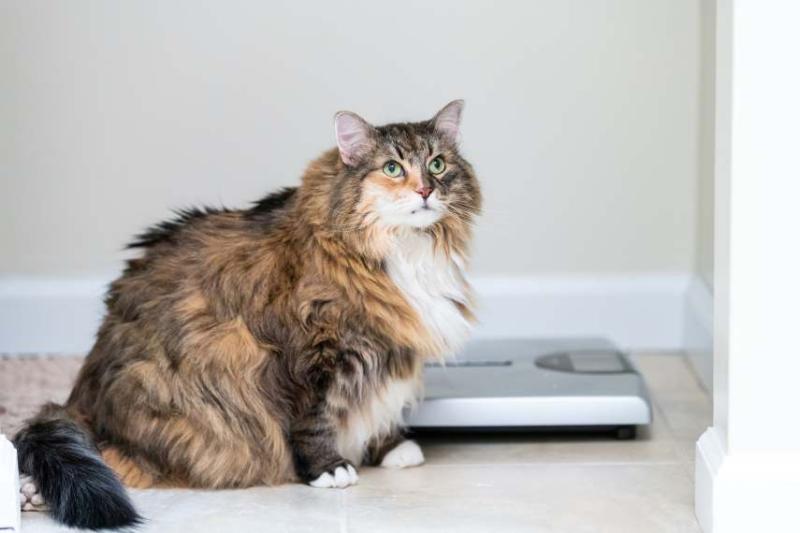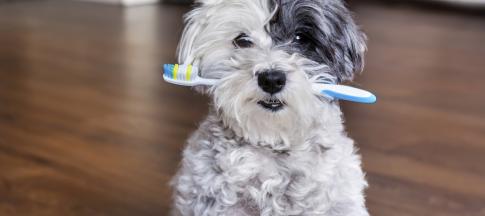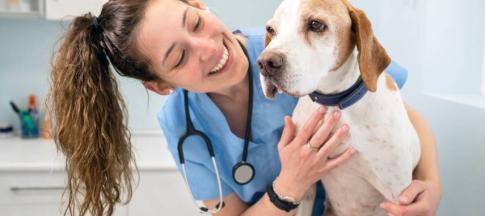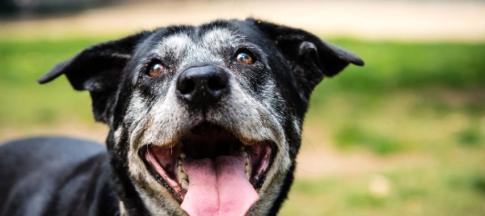
It’s all too easy to overindulge our pets. We get it, showering them with treats is easy when they’re so cute.
But overfeeding combined with a lack of exercise can lead to weight gain – a problem that increases the risk of certain health issues, from joint problems to heart disease.
We’ve put together some information we think is important about managing overweight pets, the impact this may have on some insurance policies and dealing with the side effects of obesity.
Does weight gain impact pet insurance?
We understand that weight gain issues aren’t always straightforward. That’s why we believe that all pets should have the benefit of pet insurance regardless of their weight.
If you’re worried that your pet is overweight, don’t panic: some health problems associated with obesity can be tackled depending on the cause.
But it’s important to note that if your pet is overweight due an underlying health condition, they may put on weight that’s difficult or impossible to lose.
What are the causes of obesity in pets?
There are many reasons for pet obesity, including overeating, under exercising and medical concerns/the medications used to treat these.
From leftovers from your meals to too many treats, it’s easy to accidentally overfeed your pet. Maintaining a healthy weight for pets starts with understanding the importance of portion control and calorie management.
Check out the Royal Veterinary College’s guidelines on pet nutrition and diet.
Your dog’s exercise requirements will depend on their age, breed, size, health and current fitness level.
It’s also important to be aware of the risks associated with over-exercising young dogs. This can lead to health conditions such as growth plate and long bone deformities.
Exercising your cat can be a bit more challenging, particularly if your cat remains indoors. You should speak to a vet for advice on how much exercise your pet needs.
How can I tell if my pet is overweight?
A veterinary professional can diagnose weight issues by weighing your pet and using a body condition score.
Your pet’s breed will usually have a typical weight range, but please remember that there are many variables that need to be taken into consideration (e.g. age, breed and existing health issues).
When checking your pet’s weight between vet visits you should be able to:
- feel your pets’ ribs when you run your hands down each side but not see them (this is the same for the spine and hips)
- see the definition of their waist when you look at them from above or from a side profile
Dangers of obesity in pets
Weight gain in animals has a bigger effect than it does in humans.
For example, a 5kg Jack Russell gaining an additional 2kg is the equivalent of a 10 stone person gaining an extra 4 stone.
Obese pets are more prone to health problems and live shorter lives, and our research reveals that a third (32%) of UK veterinary practices noted an increase in overweight pets in 2024.
An Admiral survey of UK pet owners found that 36% of dog owners and 53% of cat owners have no idea how much their furry friends weigh.
Some of the health problems that can occur because of being overweight are:
- breathing difficulties
- high blood pressure
- diabetes
- liver disease or dysfunction
- osteoarthritis
- lowered immune system function
- increased risk of developing certain types of cancer
- bladder stones
- urinary incontinence
- heatstroke
- increased risk of injury
- cruciate ligament problems
- Cushing’s disease
The impact of food is greater too. For example, a Dachshund eating 25g of cheese is like a human eating two large muffins.
The same amount of cheese for a cat converts to three and a half hamburgers for the average person.
What not to feed your pet
You shouldn’t give your pets:
- grapes and raisins – they're also found in many cakes including hot cross buns
- onions, garlic and chives – a key ingredient in many meals, make sure your leftovers are safely stowed away
- nuts – lots of types of nuts can be harmful, but Macadamia nuts are especially dangerous for dogs and cats
- milk and dairy – as many pets are unable to break down lactose, eating dairy could lead to intestinal cramping and diarrhoea
- bones – don't give dogs bones as they can be a choking hazard
- chocolate – dark chocolate and cocoa contain higher levels of theobromine, which is toxic to pets.
If your vet says your pet’s a bit on the heavy side, it’s important to follow their dietary advice to get your pet back to a healthy weight.
What should I feed my pet?
You can give your pets:
- apples – this fruit is a great source of vitamins A and C, although it's important that cats don't eat the stems, leaves or seeds
- carrots – these are high in fibre but should be cooked for felines to avoid a choking hazard
- plain, boiled chicken breast – this is a much safer meat for both dogs and cats
- blueberries – this fruit is an excellent source of vitamins A, C, K, and E, as well as being high in antioxidants, flavonoids, and fibre
Buying good-quality, balanced pet food is important, but different types of pets need different food.
Look at the label of the food you buy. Often, it'll give guidance about how much to feed your pet based on their weight. It can also depend on their breed, life stage and health concerns.
Puppies and kittens have different nutritional needs to fully grown dogs and cats. We recommend feeding your puppy or kitten labelled puppy or kitten food until they’re around a year old (or as advised by your vet) before moving them on to adult food.
Larger breed dogs may require to be on puppy food for longer as it takes them longer to grow. The type of food your pet requires is also heavily dependent on their life stage.
Always get veterinary advice to discuss nutritional requirements if you’re unsure what your pet needs.
How to exercise your dog
The easiest way to exercise your dog is by getting out in the fresh air.
You should make sure that your pet is getting the right amount of exercise depending on their breed, age, health concerns and fitness levels.
For cats, try out as many interactive toys as possible, like feather wands, laser pens and interactive feeders to get them moving.
It’s even more important with indoor cats, so make sure you encourage playtime. You should try and spend 15-20 minutes a day playing with your cat.
How often should I give my pet treats?
It’s important to be aware of how many calories are in the treats you’re giving your pet, and where possible, swapping them out for a healthier option.
Did you know there are 301 calories in a well-known daily dog dental chew? That is almost a 10kg dogs daily calorie allowance.
If treats are part of training, consider using part of their normal meal in small portions during training.
You can also change your rewards – verbal praise, stroking and their favourite toy are often enough to say well done.
What happens when your pet reaches their goal weight?
The job isn’t finished when your pet reaches their goal weight – after that it’s time to maintain their weight.
The three best ways to maintain your pet’s weight are to prioritise:
- good-quality food
- portion control
- regular exercise
Expert advice
Nicki Fox RVN CertVNECC APVN, Admiral’s Veterinary Specialist, highlights the importance of monitoring your pet’s weight:
- Managing pet weight can be challenging, and the causes aren’t always straightforward.
- There are practical steps that pet owners can take to keep their companions healthy and energetic.
- Ensuring pets receive the right portion sizes, monitoring calorie intake, and adjusting meals and treats accordingly are essential steps to maintain a balanced weight.
- Regular exercise suited to your pets age, breed, and health conditions is also key.
- Find the right balance for your pet and consulting veterinary professionals when needed to tailor their diet and activity level.
As a subject close to his heart, Dr Scott Miller, resident vet on ITV’s This Morning, provides his five top tips for helping your pet lead a happy and healthy life:
- Exercise - walking every day is great for you and your dog, promoting good cardiovascular health, socialisation and enjoying a good old sniff. Cats need to either head outdoors for exercise, or use moving toys to get their heart rate up and waistline down.
- Diet - with so many foods out there, my top tip is to keep it simple. Our pets have just a sixth of the taste buds as us, and are prone to dietary intolerances, allergies and gastro-intestinal upsets. Feeding 'the spice of life' is a recipe for disaster or diarrhoea, and increased visits to the vet.
- Nose to tail exam - a once daily check from head to toe can keep the vet away and pick up issues such as lumps, parasites or injuries early, and is a great way to understand what is 'normal' for your pet to avoid unnecessary vet visits.
- Preventative measures - worming, flea control and regular vet checks are the best way to avoid conditions which are preventable and pick up early those that are not.
- Quality time - dedicate time to simply be with them, actively think about when you are out and how you adequately prevent boredom and separation anxiety, to ensure they are healthy of mind and spirit.


